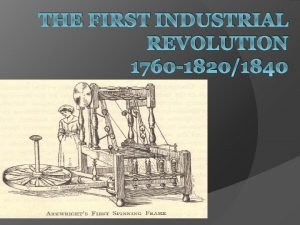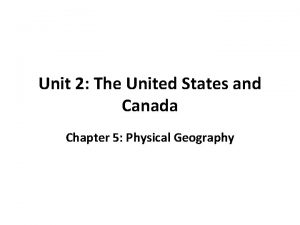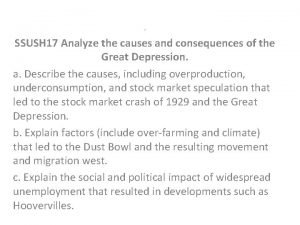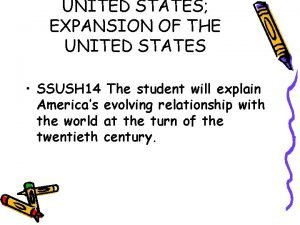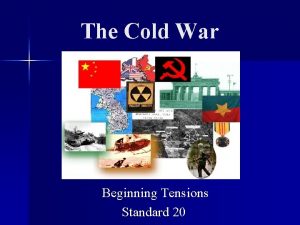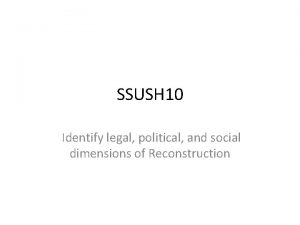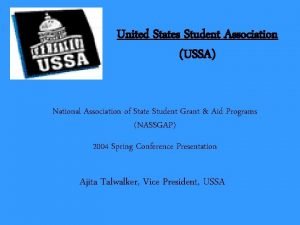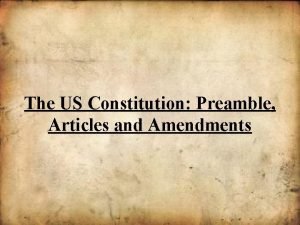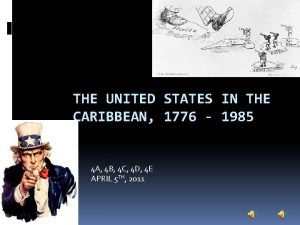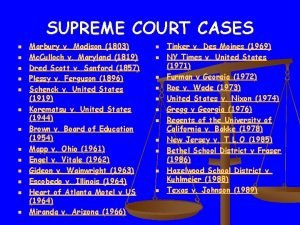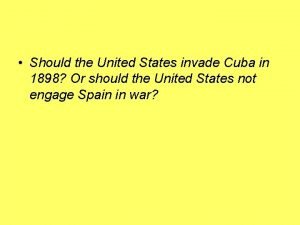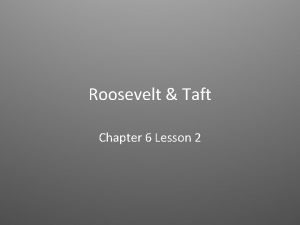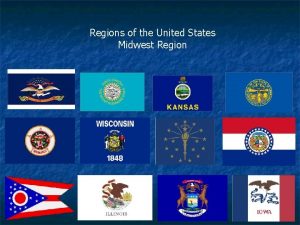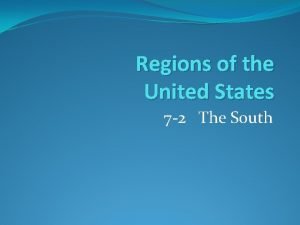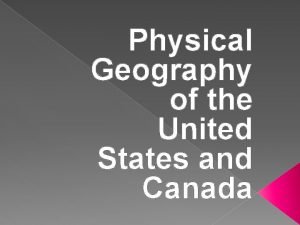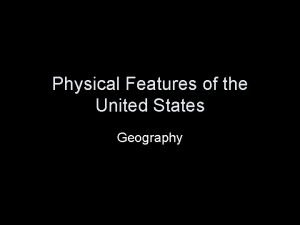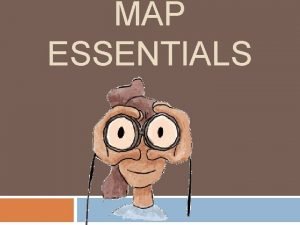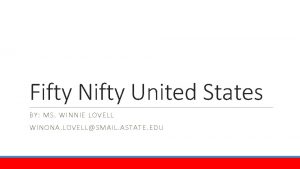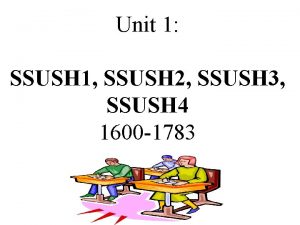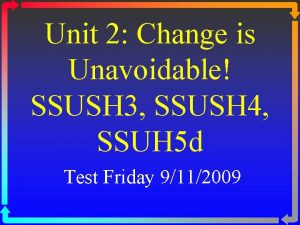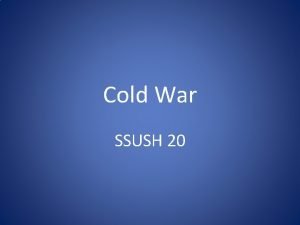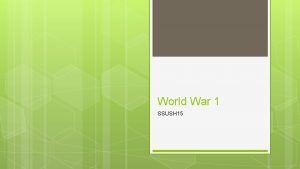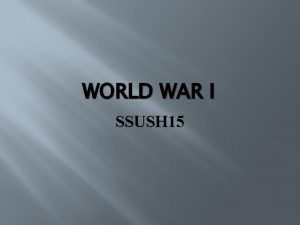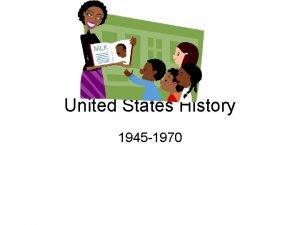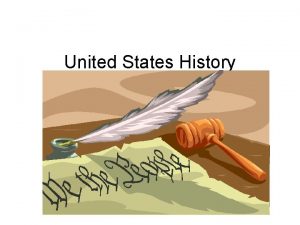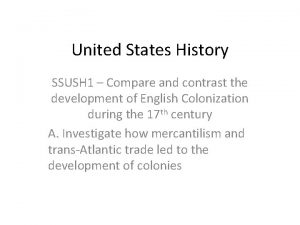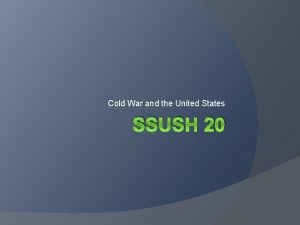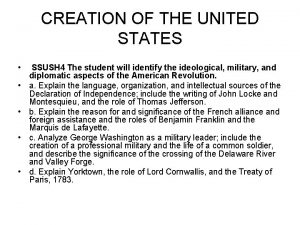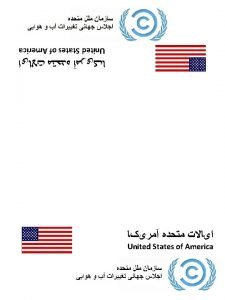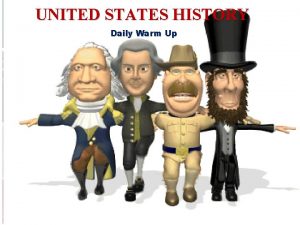The Early United States Unit 4 SSUSH 6
































- Slides: 32

The Early United States Unit 4 SSUSH 6

SSUSH 6 – The student will analyze the nature of territorial and population growth and the impact of this growth in the early decades of the new nation. • Explain the Northwest Ordinance’s importance in the westward migration of Americans, and on slavery, public education, and the addition of new states. • Describe Jefferson’s diplomacy in obtaining the Louisiana Purchase from France and the territory’s exploration by Lewis and Clark.

SSUSH 6 – The student will analyze the nature of territorial and population growth and the impact of this growth in the early decades of the new nation. • Explain the major reasons for the war of 1812 and the war’s significance on the development of a national identity. • Describe the construction of the Erie Canal, the rise of New York City, and the development of the nation’s infrastructure. • Describe the reasons for and importance of the Monroe Doctrine.

The Northwest Ordinance • After the French and Indian War, Britain took possession of the Northwest Territory (area north of the Ohio River and east of the Mississippi • Following the American revolution, the Continental Congress passed the Northwest Ordinance in 1787. • It divided the area into smaller territories and provided guidelines for new states SSUSH 6 a

SSUSH 6 a

The Northwest Ordinance • The law resulted in the formation of five states: Ohio, Indiana, Michigan, Wisconsin, and Illinois. • The Ordinance made slavery illegal in the new territories (unless settlers already had slaves) • Many free blacks moved north of the Ohio River but were met with discrimination SSUSH 6 a

Northwest Ordinance • When a territory reached 60, 000 people, it could apply for statehood. • East coast states had to relinquish their claim to this territory. • Although not enforced, Indians were not to be removed from their lands – American troops defeated them later to allow more settlers. SSUSH 6 a

Expansion and Education • Acquisition of the Northwest territory impacted education. • Leaders wanted to make sure that the country maintained a sense of unity and “national values” (patriotism) • They used public education as a tool to encourage these principles. • Many new state constitutions required public education. SSUSH 6 a

Noah Webster • Key leader in the educational movement. • Compiled the first US dictionary that included words and spellings distinct to the US rather than British versions. • Played a major role in forging a national language and helped to unify the educational standards of the day. SSUSH 6 a

The Louisiana Territory • Thomas Jefferson wanted to secure the United States trading on the Mississippi River. • He sent representatives to France to negotiate the purchase the city of New Orleans. • Napoleon was not interested because he wanted to revive the French colonial empire. SSUSH 6 b

The Louisiana Territory • Slaves in the French colony of Haiti revolted and the British resumed its war with France – Napoleon needed cash. • He offered to sell the entire Louisiana Region for $15 million dollars (3 cents per acre) • Jefferson believed that the people should have access to land the potential new resources, so he accepted the offer. SSUSH 6 b

The Louisiana Purchase 1803 SSUSH 6 b

The Louisiana Purchase • The largest land purchase, roughly doubling the size of the United States – 828, 000 square miles • It marked a turning point for the new nation economically as it began to pursue prosperity within its own borders rather than from foreign trade. SSUSH 6 b

Lewis and Clark Expedition • Even before the Louisiana Purchase was complete, Jefferson had appointed his personal secretary, Meriwether Lewis, to find a water route to the Pacific Ocean. • Congress appropriated $2, 500 • Lewis chose William Clark to help him lead the expedition. • They left in May 1804 from St. Louis SSUSH 6 b

Lewis and Clark Expedition SSUSH 6 b

Lewis and Clark Expedition • They reached the Pacific Northwest coast by November 1805. • They returned to St. Louis in September of 1806 with valuable information about the territory. • This led to rapid migration to the Pacific Northwest along the Oregon Trial from Missouri. SSUSH 6 b

Lewis and Clark Expedition • Lewis and Clark came to employ a French-speaking, part -Indian fur trapper named Toussaint Charbonneau, whose young Shoshone Indian wife, was named Sacagawea, (pronounced Sa-ka-ga-wea) SSUSH 6 b

The War of 1812 • U. S. settlers felt threatened by the British presence in Canada and the apparent alliance between them and the Indians. • The British navy’s policy of impressing U. S. seaman (taking them captive and forcing them to serve on British ships) • The United States declared war on Great Britain in June of 1812. SSUSH 6 c

War of 1812 • Americans hoped to gain territory in Canada and in Spanish Florida • British attacked and burned Washington D. C. • America recovered at the Battle of Fort Mc. Henry (near Baltimore) • Frances Scott Key wrote the Star Spangled Banner while being held captive by the British. SSUSH 6 c

Treaty of Ghent • Restored original borders • Returned relationship to the status quo ante bellum. • Signed December 24, 1814 SSUSH 6 c

Battle of New Orleans • took place on January 8, 1815, and was the final major battle of the War of 1812. • American forces under General Andrew Jackson defeated an invading British army intent on seizing New Orleans and America's western lands. • The Treaty of Ghent had been signed on December 24, 1814, but news of the peace would not reach New Orleans until February. SSUSH 6 c

War of 1812 • War was a draw – nobody won or lost • It showed that the United States could defend itself and assert its interests in North American against a foreign power. • Due to its opposition to the war, the Federalist Party lost its credibility and faded from importance in national politics. SSUSH 6 c

A National Identity • The War of 1812 helped to produce a stronger sense of national identity among U. S. citizens. • People felt a great deal of pride in standing up to the British, again! • American trade declined during the war, but manufacturing and agriculture improved and grew prosperous. SSUSH 6 c

A National Identity • Northern manufacturers sold more products to other regions of the country. • Southern plantation economy exploded as the nation’s only supplier of cotton. • By the time the war ended, U. S. citizens had a new sense of national pride and manufacturers and planters had established themselves as players in domestic and international trade. SSUSH 6 c

New York City • New York City benefitted from the changes during the War of 1812 • By 1814, Textile mills were common in the city; this helped to make NYC a key economic center of the country. • New York City’s port made it a major center for shipping and trade, as well as, the arrival point for immigrants SSUSH 6 d

The Erie Canal • New York also prospered from the completion of the Erie Canal in 1825 • The canal provided a new shipping route from Lake Erie to the Hudson River • 363 miles long; 40 feet wide; 4 feet deep • Began in 1817; completed in 1825 • Allowed people to travel cheaper • Made NYC the dominant commercial center by expanding its markets. SSUSH 6 d

The Erie Canal SSUSH 6 d

Robert Fulton • Developed the first successful commercial steam ship. • Greatly increased the efficiency of travel; one could now travel upstream SSUSH 6 d

The American System • Senator Henry Clay of Kentucky proposed a plan to improve the nation’s economy and infrastructure. • An infrastructure is what provides the framework and connections holding something together. • This included things like roads, rail lines, canals, etc. SSUSH 6 d

Clay’s American System • Called for protective tariffs (a tax on imports) to help U. S. manufacturers. • Internal improvements: such as canals and roadways funded by the tariff revenue • A Second National Bank in order to make interstate commerce easier and stabilize the nation’s currency. • Clay hoped that his plan would strengthen the US and unite the different regions of US SSUSH 6 d

Era of Good Feelings • With the end of the War of 1812 and the demise of the Federalist Party, the U. S. entered a period known as the Era of Good Feelings. • This was a time of national pride and political unity. • This was during the presidency of James Monroe SSUSH 6 e

Monroe Doctrine • Issued in 1823 • The United States would not tolerate European intervention in the affairs of any independent nation in the Americas, nor were the American continents open to European colonization any longer. • The United States would view any attempt to colonize as aggression SSUSH 6 e
 What early industries mechanized in the united states?
What early industries mechanized in the united states? Settlement patterns
Settlement patterns Unit 2 the united states and canada worksheet answers
Unit 2 the united states and canada worksheet answers Ssush
Ssush Ssush
Ssush Ssush
Ssush Ssush
Ssush Ssush
Ssush Ssush
Ssush King of england during revolutionary war
King of england during revolutionary war Was the united states on the axis powers or allied powers?
Was the united states on the axis powers or allied powers? 36 30 line
36 30 line National premier soccer league
National premier soccer league Marshall case
Marshall case United states student association
United states student association The united states ought to provide a universal basic income
The united states ought to provide a universal basic income Article i of the constitution
Article i of the constitution The united states in the caribbean 1776-1985
The united states in the caribbean 1776-1985 Products of the southeast
Products of the southeast Expansion of the united states of america 1607 to 1853 map
Expansion of the united states of america 1607 to 1853 map Who was nicholas novikov? when did he write this telegram
Who was nicholas novikov? when did he write this telegram British cession date
British cession date Awake united states meaning
Awake united states meaning Mapp v ohio
Mapp v ohio We have pacified some thousands of the islanders
We have pacified some thousands of the islanders Guided reading activity lesson 2 roosevelt and taft
Guided reading activity lesson 2 roosevelt and taft Midwest region of the united states
Midwest region of the united states 7 regions of the united states
7 regions of the united states The united states is the greatest buyer positive degree
The united states is the greatest buyer positive degree United states and canada physical map
United states and canada physical map Physical geography of the usa
Physical geography of the usa Earth map latitude
Earth map latitude North south east west in our calm objective opinion
North south east west in our calm objective opinion
